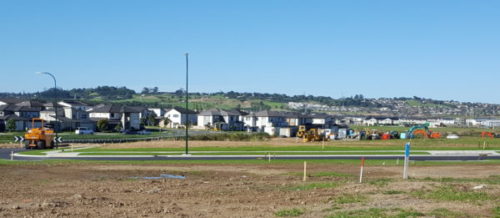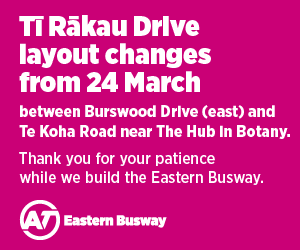
“Last week’s announcement of a 10 per cent year-on-year decline in Auckland’s April dwelling consents and fall in the total number of new homes completed in the last quarter reinforces the importance of urgently implementing the Government’s Urban Growth Agenda.
That’s the view of Stephen Selwood, CEO of Infrastructure New Zealand.
The 1043 homes consented in April 2019 was down from 1163 in April 2018, according to recent data released by the Auckland Council’s Research and Evaluation Unit.
“These numbers confirm strong anecdotal evidence coming from the infrastructure and development sector of a slowing in the market,” said Selwood.
“Of the 13,754 homes consented, three quarters were actually certified as being completed in the last year.”
While up on the preceding rolling 12 months, the total number of certificates of completion dropped from 10,637 in December 2018 to 10,195 in April 2019.
“This leaves the region shy of delivering the 14,000 homes per year it needs to stay on top of population growth,” he said.
“The total number of dwellings delivered each year now needs to be closer to 20,000 for the next decade if the region is to build the almost 50,000 homes the council estimates Auckland is short.
“It is disappointing, but not surprising, that the market has now turned, just at the point at which consents were almost meeting demand for the first time in a decade.”
Selwood said the lack of competitively priced land supply means that it is almost impossible for housing to ever meet demand. Each time it comes close, he said, house prices begin to flatten out and developers are forced to cut output or sell new homes below cost.
“Supply drops while industry waits for the market to recover and more people get pushed onto the streets,” said Selwood.
“A particularly unfortunate side-effect is that many misinterpret slowing supply as a signal that there is no longer demand in the system.
“That of course is untrue. There continues to be an enormous demand for homes priced less than $500,000.”
Half of Auckland’s households earn less than $100,000 per annum, he said. They need homes at $300,000-$500,000, not $600,000 plus.
Last year in Auckland, only 5 per cent of house sales were within this price bracket.
“It’s not just Auckland. Tauranga is just months away from housing system failure. Queenstown cannot accommodate its workforce,” he said.
“The Government’s Urban Growth Agenda is a key part of the solution. Releasing land and providing the tools to fund and finance infrastructure to unlock that land for housing is exactly what is required.
“The Government can either do this in a targeted way to align developments with transport corridors, or give the market full flexibility but create risks around transport misalignment.”
Selwood believed that If it moves now to secure partnerships with land owners around strategically located land near public transport corridors, it can both improve housing supply and reduce congestion.
“Aggregating and rezoning rural land adjacent to rail and enabling infrastructure, residential and commercial development at scale will create value that can be passed on to homeowners in the form of affordable house prices,” he said.
“But acting now is imperative before the market softens further and builders pack up tools and move to Australia.
“The speed at which the Urban Growth Agenda is being implemented is a growing concern. This is the Government’s year of delivery and if it waits any longer before unlocking affordable land supply there is a very high likelihood in a return to rapid house price inflation, and growing homelessness.
“It is urgent that the Government acts now. The policies are there. They need to be implemented.”








